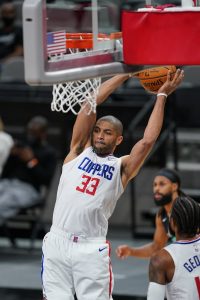As is the case in the NBA’s head coaching ranks, a number of long-tenured heads of basketball operations have been replaced in 2021, a result of some offseason front office shakeups.
Since we put together last offseason’s list of the league’s longest-tenured heads of basketball operations, Danny Ainge and Donnie Nelson, who had been with their respective teams for over 15 years, have left those franchises. As such, it’s time to update our list.
Although only one person holds a team’s head coaching job, that same team could carry a variety of front office executives with titles like general manager, president of basketball operations, or executive VP of basketball operations. In some cases, it’s not always which clear which executive should be considered the club’s head of basketball operations, or which one has the ultimate final say on roster decisions. That distinction becomes even more nebulous when taking into account team ownership.
For our list of the longest-tenured GMs/presidents in the NBA, we’ve done our best to identify the top exec in each front office, but if a situation isn’t entirely clear-cut, we’ve made a note below.
Here’s the list of the NBA’s longest-tenured heads of basketball operations, along with their respective titles and the dates they were hired or promoted:
- Gregg Popovich, Spurs (president): May 31, 1994

- Brian Wright holds the general manager title, but Popovich ultimately has final say.
- Pat Riley, Heat (president): September 2, 1995
- Sam Presti, Thunder (GM/executive VP): June 7, 2007
- Bob Myers, Warriors (GM/president): April 24, 2012
- Neil Olshey, Trail Blazers (president): June 4, 2012
- Masai Ujiri, Raptors (president): May 31, 2013
- Tim Connelly, Nuggets (president): June 17, 2013
- Sean Marks, Nets (GM): February 18, 2016
- Kevin Pritchard, Pacers (president): May 1, 2017
- Jeff Weltman, Magic (president): May 22, 2017
- Travis Schlenk, Hawks (president): May 25, 2017
- Jon Horst, Bucks (GM): June 16, 2017
- Koby Altman, Cavaliers (GM): June 19, 2017
- Lawrence Frank, Clippers (president): August 4, 2017
- Mitch Kupchak, Hornets (GM/president): April 8, 2018
- Tommy Sheppard, Wizards (GM): April 2, 2019
- Sheppard assumed the job on an interim basis on April 2, 2019. He was named the permanent GM on July 22, 2019.
- Rob Pelinka, Lakers (GM/VP): April 9, 2019
- Pelinka has been the Lakers’ GM since February 2017, but was below Magic Johnson in the front office hierarchy until Johnson resigned on April 9, 2019.
- James Jones, Suns (GM): April 11, 2019
- Jones began serving as the Suns’ co-interim GM alongside Trevor Bukstein in October 2018, but was named the lone, permanent head of basketball operations on April 11, 2019.
- Zach Kleiman, Grizzlies (executive VP): April 11, 2019
- David Griffin, Pelicans (executive VP): April 17, 2019
- Gersson Rosas, Timberwolves (president): May 3, 2019
- Leon Rose, Knicks (president): March 2, 2020
- Arturas Karnisovas, Bulls (executive VP): April 13, 2020
- Troy Weaver, Pistons (GM): June 18, 2020
- Monte McNair, Kings (GM): September 17, 2020
- Rafael Stone, Rockets (GM): October 15, 2020
- Daryl Morey, Sixers (president): November 2, 2020
- Brad Stevens, Celtics (president): June 2, 2021
- Justin Zanik, Jazz (GM): June 27, 2021
- Zanik has been in the Jazz’s front office since September 2017 and has been the team’s GM since May 2019, but was below Dennis Lindsey in the front office hierarchy until Lindsey was reassigned to an advisory role on June 27, 2021.
- Nico Harrison (GM/president): June 28, 2021
- Owner Mark Cuban is also heavily involved in basketball decisions and ultimately has final say.
Information from Basketball-Reference was used in the creation of this post.
